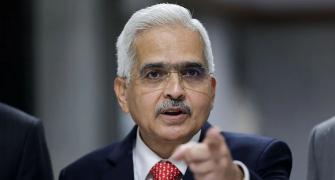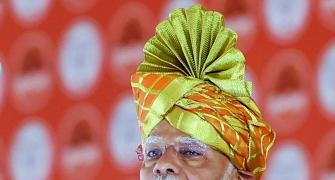Ashima Goyal, a member of the RBI's MPC who voted against the panel's latest rate hike, spoke to Business Standard's Bhaskar Dutta.

She spoke about how further tightening could affect the interest-elastic components of aggregate demand, potentially pushing down GDP growth towards 5 per cent.
Edited excerpts:
"You voted for a pause in rate hikes based on several factors, including risks of over-tightening. Since the last policy statement, however, inflation has surprised sharply on the upside. Does this alter your reading of the situation?
"My main reason for the pause was that we had reached the contractionary real rate appropriate in the current conditions of a global slowdown. A transient fall or spike does not change that. There may be upward risks for inflation, but there are downward risks also.
"You have pointed out that real policy rate hikes in India have a stronger effect on growth than inflation. How much of an impact do you see on the MPC's growth forecasts for FY24 if financial conditions were tightened further from here?
"The RBI growth forecast rates depend on growth in continued consumption and investment since exports are slowing.
"Aggregate government expenditure will also reduce with fiscal consolidation. Private consumption and investment are the interest-elastic components of aggregate demand. Growth can fall towards 5 per cent if these fall. As in the 2010s, the sacrifice ratio can be very high if trends lower growth results.
"You mentioned the role of the RBI's reserves in maintaining independence from the Fed. The latest data show a downward trend in reserves again, following strength in the dollar. Are concerns over potential volatility in the rupee playing a role in the MPC's decisions on policy signals?
"Volatility in the rupee is not in the MPC's terms of reference. And raising policy rates will not reduce rupee volatility in Indian conditions where debt flows are limited. The MPC has to respond if sharp depreciation raises expected inflation.
"The RBI mentioned the overall surplus liquidity as a factor behind retaining the current stance of withdrawing accommodation. You voted for a neutral stance. Is this keeping in mind durable liquidity requirements?
"Since India is subject to large exogenous liquidity shocks, the current durable liquidity level was insufficient to prevent overnight rates from rising above the LAF band at the end of 2022. It does not need to be withdrawn further. Regardless of the stance, LAF tools must be fine-tuned to ensure overnight rates stay in the band.
"Given the multiple supply shocks suffered, you called for more excise tax cuts. In terms of monetary-fiscal coordination, what more could be done, considering the persistence of high inflation?
"Coordination is required because fiscal policy is more effective against commodity inflation.
"A rise in policy rates can reduce it only with a large output sacrifice, as it works by contracting demand. The price of the Indian crude basket has been lower for a number of months, but there is no pass-through to retail prices.
"Excise tax can be reduced for selected commodities contributing to inflation. Longer-term measures to reduce costs and improve productivity must, of course, continue.
"You mentioned the high interest elasticity of output in India. Rates on short-term debt instruments, some of which serve as external benchmarks for loans, have recently shot up. Are there signs that the "overshooting" you warned of has begun?
"The Indian yield curve has flattened implying inflation is not expected to persist. The overshooting I am concerned about is if high real rates reduce interest-elastic demand, such as for durables and housing, and dampen investment.
"Real loan rates are in the contractionary range now since spreads are high in the Indian system. Continuing to raise nominal repo rates until core inflation falls could imply an overshooting or excess tightening of real rates."










